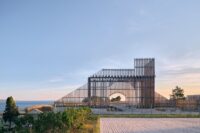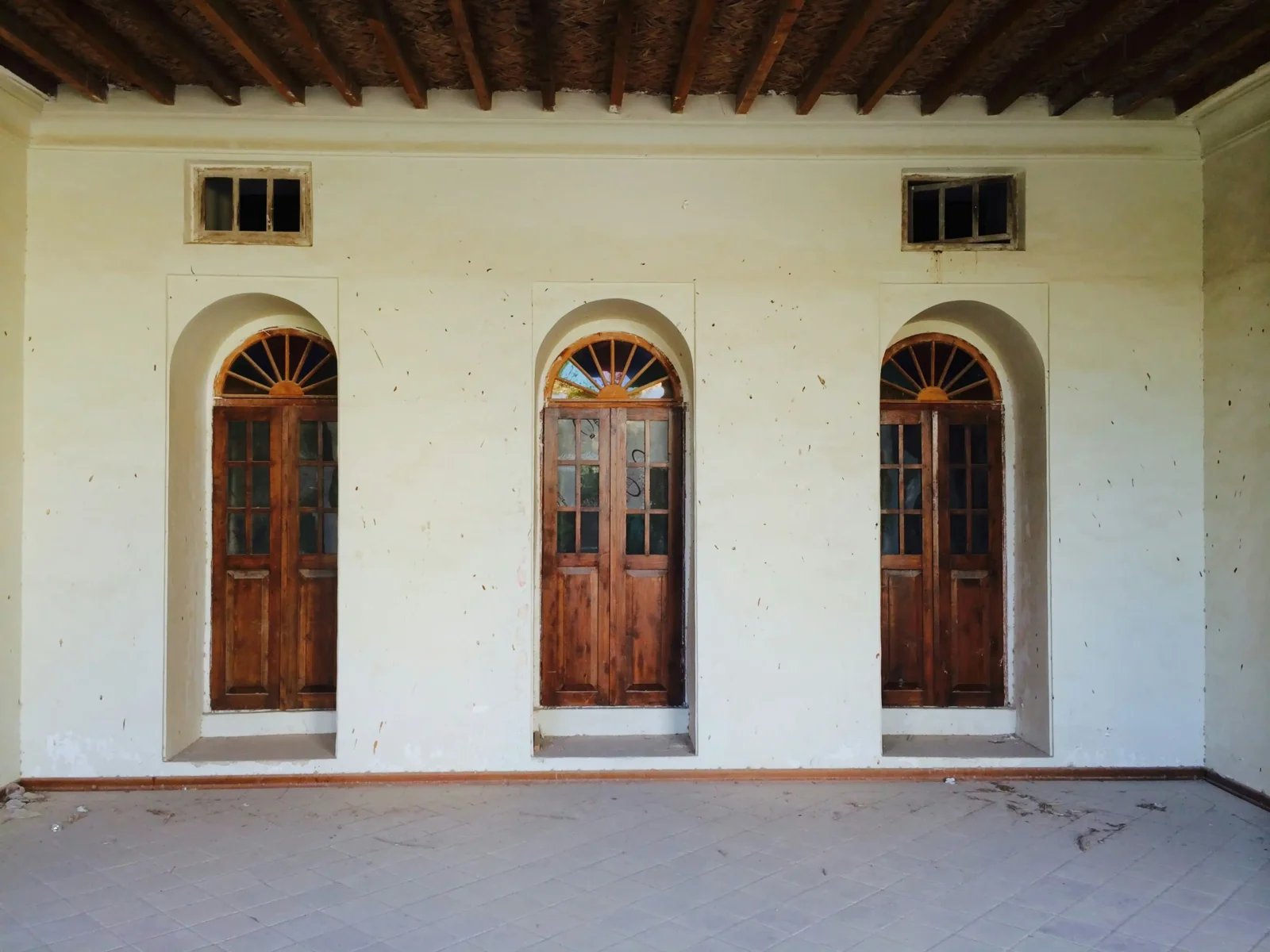- Home
- Articles
- Architectural Portfolio
- Architectral Presentation
- Inspirational Stories
- Architecture News
- Visualization
- BIM Industry
- Facade Design
- Parametric Design
- Career
- Landscape Architecture
- Construction
- Artificial Intelligence
- Sketching
- Design Softwares
- Diagrams
- Writing
- Architectural Tips
- Sustainability
- Courses
- Concept
- Technology
- History & Heritage
- Future of Architecture
- Guides & How-To
- Art & Culture
- Projects
- Interior Design
- Competitions
- Jobs
- Store
- Tools
- More
- Home
- Articles
- Architectural Portfolio
- Architectral Presentation
- Inspirational Stories
- Architecture News
- Visualization
- BIM Industry
- Facade Design
- Parametric Design
- Career
- Landscape Architecture
- Construction
- Artificial Intelligence
- Sketching
- Design Softwares
- Diagrams
- Writing
- Architectural Tips
- Sustainability
- Courses
- Concept
- Technology
- History & Heritage
- Future of Architecture
- Guides & How-To
- Art & Culture
- Projects
- Interior Design
- Competitions
- Jobs
- Store
- Tools
- More
The Essential Role of Structure in Architecture: Balancing Art and Engineering
Discover the vital role of structural design in architecture, where stability meets creativity. This article delves into the evolution of architectural principles, from ancient techniques to modern innovations. Learn about load-bearing and frame structures, the materials that shape our buildings, and the collaboration between architects and engineers.

When we think about architecture, the first thing that often comes to mind is the stunning facades and innovative designs. But behind every breathtaking building lies a complex structure that ensures stability and longevity. Understanding the role of structure in architecture is crucial for appreciating how these magnificent creations stand tall against the test of time and nature.
From ancient stone temples to modern skyscrapers, the principles of structural design guide architects in their quest for beauty and functionality. We’ll explore how materials, engineering, and creativity come together to shape our built environment. By delving into the essentials of architectural structure, we can uncover the harmony between aesthetics and safety that defines our cities.

Table of Contents
ToggleUnderstanding Structure In Architecture
Structure in architecture refers to the systems that support buildings and define their shapes. This fundamental aspect plays a critical role in ensuring safety, functionality, and aesthetic appeal.

Definition and Importance
Structural design encompasses the science and art of creating framework systems that bear loads. These frameworks consist of materials like steel, concrete, and wood, which provide strength, flexibility, and resilience. The importance of structural integrity can’t be overstated; it prevents structural failure, supports functionality, and complies with safety standards.
Historical Context
The evolution of structural design traces back to ancient civilizations, where early architects used basic principles of physics. Ancient Greeks employed columns, while Roman builders introduced arches, enhancing load-bearing capabilities. As we moved into the Renaissance, innovations like the dome emerged, leading to iconic buildings like St. Peter’s Basilica. Modern architecture utilizes advanced materials and technology, paving the way for skyscrapers and complex forms that challenge traditional design limits. Each era’s architectural advancements illustrate our ongoing quest for balance between strength and artistry.
Types Of Structural Systems
Various structural systems form the backbone of architectural design. Understanding these systems enhances our appreciation of how buildings achieve stability and functionality.

Load-Bearing Structures
Load-bearing structures support vertical loads directly through their walls or other structural elements. These designs, prevalent in ancient architecture, use materials like stone or brick, allowing walls to carry the weight of floors and roofs. Innovations in load distribution techniques lead to increased building height and complexity. For instance:
- Masonry Walls: Thick walls made from brick or stone provide robust support.
- Concrete Walls: Reinforced concrete offers strength and durability.
- Earth Structures: Adobe or rammed earth walls create energy-efficient environments.
Frame Structures
Frame structures rely on a skeletal framework to support loads, which allows for larger open spaces and varied designs. This system distributes forces evenly across beams and columns. Modern materials such as steel and engineered wood enable architects to create more intricate forms. Key features of frame structures include:
- Steel Frames: Light and strong, steel frames facilitate skyscraper construction.
- Wood Frames: Used in residential buildings, wood frames provide flexibility and insulation.
- Truss Systems: Triangular units distribute loads effectively, increasing stability.
Together, these structural systems highlight the blend of engineering principles and aesthetic elements in architecture, ensuring buildings fulfill their intended purposes while captivating our imagination.
Materials Used In Structural Design
Materials play a vital role in structural design, providing the necessary strength, stability, and aesthetics for our buildings. We examine both traditional and modern materials that contribute to the integrity and functionality of architectural structures.

Traditional Materials
Traditional materials have shaped the foundations of architectural design for centuries.
- Stone: Stone offers exceptional durability and compressive strength, making it ideal for monumental structures like cathedrals and castles. Its natural beauty also enhances visual appeal.
- Brick: Brick provides excellent thermal mass and load-bearing capabilities. Commonly used in residential construction, it creates a warm, inviting appearance.
- Wood: Wood combines lightness and strength, allowing for versatile construction. Its renewable nature makes it an eco-friendly option, suitable for homes, bridges, and more.
- Concrete: Concrete’s composition of cement, sand, and aggregates yields a material with high compressive strength, widely used in foundations, walls, and structures like domes.
Modern Materials
Modern materials have revolutionized structural design, allowing for innovative construction techniques and aesthetic advancements.
- Steel: Steel’s high tensile strength enables the creation of slender, towering structures. It allows for flexible designs and faster construction times, playing a central role in skyscraper design.
- Reinforced Concrete: Combining concrete with steel reinforcement bars enhances tensile strength. This composite material enables thinner, stronger structures that endure significant loads and stresses.
- Glass: Glass not only provides transparency and natural light but also serves structural purposes in innovative designs. It allows for visually striking, open spaces while contributing to energy efficiency.
- Composite Materials: Materials like fiber-reinforced polymers offer lightweight alternatives with enhanced strength and durability. They’re increasingly used in bridge construction and high-performance building applications.
Understanding these materials equips us to appreciate the intricate balance between aesthetics and functionality in structural design.
The Role Of Engineers And Architects
Engineers and architects play vital roles in the structural design process, collaborating closely to bring visionary concepts to life. Their combined expertise ensures that structures are not only aesthetically appealing but also safe and functional.

Collaboration In Design
Collaboration involves teamwork between engineers and architects throughout the design process. Architects envision a project, focusing on aesthetics, space, and user experience. Engineers, on the other hand, concentrate on functionality, stability, and structural integrity. This teamwork begins during the initial brainstorming, where architects present ideas while engineers assess feasibility based on materials and building codes. Regular meetings and shared software tools foster clear communication, allowing immediate feedback on design modifications. Successful projects often emerge when both disciplines integrate their knowledge, ensuring that creative concepts transform into resilient structures.
Challenges Faced
Collaboration does not come without challenges. Conflicting priorities often arise, such as architects desiring bold designs while engineers emphasize safety and regulatory compliance. Budget constraints frequently limit material choices and design options, pushing teams to find innovative solutions within financial boundaries. Scheduling conflicts, particularly in large projects, can hinder efficient communication among stakeholders. Additionally, the complexity of modern structures requires a comprehensive understanding of various codes and standards, presenting a continual learning curve for both engineers and architects. To address these challenges, ongoing education, open dialogue, and flexible problem-solving strategies are essential for a successful partnership in structural design.
Notable Examples Of Structural Innovation
We explore remarkable structures that exemplify innovation in architecture, showcasing how creative design and engineering have transformed our skylines. These examples highlight the evolution of structural techniques and materials that define contemporary architectural achievements.

Iconic Buildings
- Burj Khalifa, Dubai
Burj Khalifa stands as the tallest building in the world at 2,717 feet (828 meters). This skyscraper utilizes a unique buttressed core system, allowing it to reach unprecedented heights while maintaining stability against wind loads.
- Sydney Opera House, Australia
Sydney Opera House features a series of shell-like structures made from precast concrete. Its complex geometric forms, created using computer-aided design, challenge traditional construction methods and optimize performance while showcasing artistic expression.
- Fallingwater, Pennsylvania
Fallingwater, designed by Frank Lloyd Wright, seamlessly integrates with its natural surroundings. Its cantilevered balconies extend over a waterfall, demonstrating innovative use of reinforced concrete to achieve harmony between architecture and nature.
- Shanghai Tower, China
Shanghai Tower is the tallest building in China, measuring 2,073 feet (632 meters). Its twisting design reduces wind loads significantly, while its advanced damping system enhances structural resilience against seismic activity.
Innovative Techniques
- 3D Printing
3D printing technology has revolutionized construction, allowing for rapid prototyping and unique designs. Structures like the 3D-printed house in Belgium demonstrate how this technique reduces material waste and construction time. - Modular Construction
Modular construction involves assembling prefabricated sections off-site, then transporting them for final assembly. This method, exemplified by the Carrie-Underwood House, accelerates build times and minimizes on-site disruptions.
- Tensile Structures
Tensile structures use cables and membranes to create lightweight, flexible designs. The Eden Project in the UK utilizes this technique, featuring geodesic domes that provide expansive spaces while reducing the need for heavy materials.
Biomimicry in architecture mimics natural systems for sustainable solutions. The Eastgate Centre in Zimbabwe, inspired by termite mounds, achieves energy-efficient ventilation without traditional air conditioning, highlighting nature’s ability to inform structural design.
These notable examples and techniques illustrate how structural innovation continues to push the boundaries of architectural possibilities.
Conclusion
Structural design stands as a cornerstone of architectural success, merging art and engineering to create buildings that captivate and endure. Understanding the evolution of structural principles underscores how historical advancements shape modern innovations. Each type of structural system, from load-bearing to framed structures, incorporates unique characteristics that enhance stability and functionality.
Traditional materials like stone and wood, alongside modern advancements such as reinforced concrete and glass, provide the basis for innovative design while maintaining the integrity of structures. Collaboration between engineers and architects ensures that both aesthetics and functionality thrive within the design process. Notable examples of structural innovation demonstrate how advanced techniques redefine our urban landscapes, showcasing the seamless integration of creativity and safety.
As we continue to explore the future of architecture, the interplay between materials, structural systems, and design philosophies will shape the way we build and experience our environments.
- Architectural Aesthetics
- architectural engineering
- architecture art balance
- Architecture design principles
- architecture functionality
- architecture structure
- art and engineering in architecture
- artistic engineering
- balance of art and engineering
- building art and structure
- building structure design
- creative engineering in buildings
- engineering aesthetics
- engineering solutions in architecture
- harmony in architecture
- innovative architectural structure
- intersection of art and engineering
- role of structure in architecture
- structural architecture
- structural art in buildings
- structural balance
- structural design in architecture
- structural design techniques
- structural integrity in design
I create and manage digital content for architecture-focused platforms, specializing in blog writing, short-form video editing, visual content production, and social media coordination. With a strong background in project and team management, I bring structure and creativity to every stage of content production. My skills in marketing, visual design, and strategic planning enable me to deliver impactful, brand-aligned results.
Submit your architectural projects
Follow these steps for submission your project. Submission FormLatest Posts
Exterior & Interior Remodeling Tips Every Homeowner Should Consider
Home upgrades reshape comfort, improve function, and strengthen long-term property value. Whether...
Top 8 Luxury Vacation Rentals Features Guests Love Most
A luxury vacation rental offers an entirely different experience than a typical...
Why Local Expertise Matters: Choosing the Right Plumbers in Townsville
Why Local Expertise Matters: Choosing the Right Plumbers in Townsville When it...
Bathroom Remodel ROI: How to Add $15–30K to Your Home Value in 2025-2026
Outdated bathrooms can drag a listing 20-30% longer on the market. Buyers...












Leave a comment